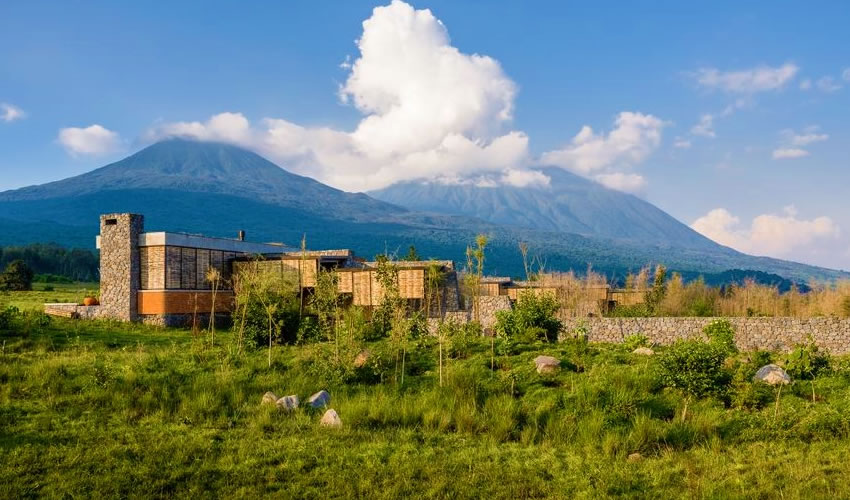- GET IN TOUCH WITH US:
- +256 753518160
- +256 777842166
- info@experiyatourcompany.com

Can children trek gorillas in Rwanda?
November 13, 2025
Can I stay near Volcanoes National Park in luxury lodges?
November 13, 2025What Are the Rules for Photographing Gorillas?
Photographing mountain gorillas in their natural habitat is one of the most emotionally stirring and visually powerful wildlife experiences available anywhere in the world. Deep in the misty forests of Volcanoes National Park in Rwanda, visitors are given a rare window into the gentle and complex world of these endangered primates. For many travellers, capturing the perfect photograph of a silverback or a playful infant gorilla becomes a once-in-a-lifetime moment. However, gorilla photography is governed by strict rules designed to protect the health, safety, and wellbeing of these incredible animals. Understanding these rules ensures not only a responsible encounter but also an ethically grounded photographic experience that respects conservation efforts.
Why Photography Rules Exist in Gorilla Habitats
Before diving into the specific rules, it is important to understand why regulations for photographing gorillas are so stringent. Mountain gorillas share approximately 98% of their DNA with humans, making them highly susceptible to human diseases. A simple cold, cough, or respiratory infection could spread rapidly within a gorilla family, putting their already vulnerable population at risk. Photography rules also exist to minimize stress on the gorillas, maintain natural behaviour, and ensure that tourists do not interfere with the fragile ecosystem of the rainforest.
Additionally, the experience is conducted in a protected national park, and every rule is part of Rwanda’s broader conservation framework. By following these guidelines, travellers help strengthen decades of dedicated protection work, supporting a species teetering on the edge of extinction. Responsible photography becomes part of the overall conservation story.
The Minimum Distance Rule: Staying Seven Metres Away
One of the most important rules for photographing gorillas is maintaining a minimum distance of seven metres from the gorilla family. This distance protects the gorillas from disease transmission and prevents tourists from encroaching on their personal space. Even though some gorillas may occasionally move closer on their own, trekkers must never approach them. The seven-metre distance rule must always be respected, even if it means stepping back or repositioning for a safer, more ethical shot.
For photographers, this means using longer lenses when necessary, especially if you hope to capture fine details such as facial expressions, muscle texture, or interactions between infants and mothers. Maintaining distance does not diminish the quality of the experience; instead, it enhances your appreciation of the gorillas’ natural behaviour from a safe, conservation-friendly perspective.
No Flash Photography Under Any Circumstances
Flash photography is strictly prohibited when photographing mountain gorillas. A sudden burst of light can startle or agitate the animals, provoking defensive behaviour or disrupting their natural activities. Flash can also create unnecessary stress, especially for mothers with infants or younger gorillas who may be more sensitive to abrupt stimuli.
Before departing for your trek, always ensure that the flash on your camera or smartphone is completely turned off. Test it during the briefing session, and double-check your settings before entering the forest. If you are using a DSLR or mirrorless camera, consider learning how to adjust exposure, ISO, and shutter speed to compensate for low light without relying on flash. The dense forest canopy often creates soft, diffused lighting that, when used correctly, produces beautiful, natural photographs.
Keep Noise Levels Low When Shooting
Mountain gorillas are calm, gentle and often indifferent to human presence, but noise from camera equipment can disturb them. Clicking sounds, loud conversations, or unnecessary movement can interrupt their behaviour. Photographers are encouraged to keep noise to a minimum, especially during intense or intimate moments such as feeding, grooming, or resting.
If your camera has a silent shutter mode, make sure it is activated before arriving at the gorillas. Whispering is allowed among trekkers, but loud voices are not. Guides often remind groups to maintain a calm, quiet atmosphere, ensuring everyone respects both the gorillas and fellow photographers trying to capture breathtaking shots.
Follow Your Guide’s Instructions at All Times
Every gorilla trekking group is accompanied by expert rangers and guides who understand gorillas’ behaviour better than anyone. Their job is to keep visitors safe, interpret gorilla behaviour, maintain proper distance, and ensure gorilla families remain undisturbed. When photographing gorillas, it is vital to follow your guide’s instructions immediately and without hesitation.
If the guide asks you to move back, lower your camera, kneel, or remain still, it is for your safety and the wellbeing of the gorillas. Sometimes guides will suggest better angles or safe positions for photographs. They understand the forest environment deeply, and their experience helps travellers capture memorable images while adhering to conservation rules.
Move Slowly and Avoid Sudden Movements
Photography often requires positioning, kneeling, and adjusting angles, but all movement must be slow and deliberate around gorillas. Sudden gestures can be interpreted by gorillas—especially dominant silverbacks—as a threat. Slow motion, calm posture, and gentle repositioning are essential for photographers wishing to remain unobtrusive.
When capturing the perfect photo, lower your body gradually, avoid waving your arms, and never run or rush into position. The more relaxed you appear, the more relaxed the gorillas will be.
Avoid Direct Eye Contact with Silverbacks
Mountain gorillas are incredibly expressive primates, and eye contact is a powerful form of communication in their world. Direct, prolonged eye contact—especially with a dominant silverback—can be interpreted as a challenge. While photographing, avoid staring directly into a silverback’s eyes for long periods. Instead, focus on composition and timing, capturing their presence respectfully without communicating dominance.
Even when photographing through a lens, remember that you are interacting with an intelligent creature whose instincts and social dynamics are different from humans.
Do Not Surround or Corner the Gorillas
Gorillas must always have an open escape route. If photographers crowd around, block paths, or corner a gorilla family, the animals may perceive it as a threat. Guides ensure trekkers remain in a loose formation, often in a semicircle, to prevent encirclement.
Photographers should remain aware of their surroundings, avoid stepping in front of another trekker, and ensure the gorillas have ample space to move naturally. Respecting their space allows for more authentic, peaceful photography opportunities.
Respect the One-Hour Viewing Limit
Regardless of how captivating the gorillas are, the viewing limit is strictly one hour. This rule helps protect gorillas from extended exposure to human presence. For photographers, this means maximizing the hour wisely. Arrive with your batteries fully charged, memory cards cleared, and gear ready. The moment the guide signals the start of your one-hour session, focus on shooting efficiently while still remembering to put the camera down occasionally to enjoy the moment with your own eyes.
Do Not Attempt to Touch Gorillas for a Photograph
Even if a gorilla moves closer, perhaps brushing against a trekker or pausing beside someone, visitors must never reach out to touch them. Physical contact can transmit diseases and create dangerous situations. Photograph interactions from a respectful distance, allowing gorillas to behave naturally without feeling invaded.
Ethical Photography Leads to Better Memories
Photographing gorillas is about more than capturing an image; it is about honouring one of the world’s most precious species. When done responsibly, photography becomes part of the conservation story, telling the world about the importance of protecting gorillas and their habitats. By following these rules, travellers ensure that the experience remains safe, ethical, and profoundly moving—for both humans and gorillas.
If you are ready to photograph and witness mountain gorillas in the misty highlands of Rwanda, consider booking your adventure with Experiya Tour Company. Their expert guides, seamless itineraries, and deep knowledge of Rwanda’s protected areas guarantee a well-organized and ethically guided gorilla trekking experience.




